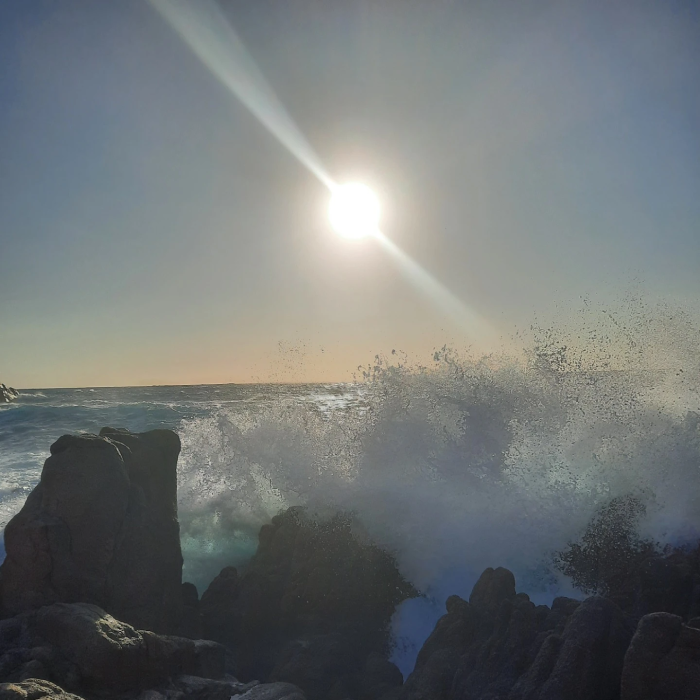Sardinia
Welcome to Sardinia
Sardinia is the second largest island in the Mediterranean after Sicily and one of the 20 regions of Italy. It is located west of the Italian peninsula, south of the French island of Corsica (we can see Corsica from Costa Paradiso in good visibility). It is known for its rich history, beautiful wildlife and culture. Sardinia is one of five Italian regions with some degree of domestic autonomy, granted by a special law. It is divided into four provinces and the metropolitan city of Cagliari. The region has an area of 24,100 km² and over 1.6 million inhabitants. In addition to Italian, Sardinian is also spoken in the region and in the city of Alghero Catalan (many Sardinians do not speak English and sometimes it is a funny hand-to-hand communication:) Sardinia is Europe’s Caribbean — with beautiful beaches of all kinds, crystal clear seas and abundant marine life and wildlife, it lives up to the hype. If you don’t want to, you won’t even meet people (but meeting a land turtle, wild pigs is no exception).
The island is relatively mountainous with a rugged coastline that is 1,849 km long. The highest peak is Punta La Marmora (1,834 m) in the Gennargent massif. The area includes the main island of Sardinia and the surrounding islands, including Sant’Antioco, San Pietro, Asinara, La Maddalena and Caprera. The landscape is diverse, or you will find mountains, forests, plains, uninhabited areas, streams, rocky coasts and long sandy beaches. The island of Sardinia is home to many protected natural areas and national parks (Gennargentu, Supramonte and Asinara) that offer wonderful opportunities for hiking and nature exploration. It is a great holiday destination for those looking for a combination of relaxation, sport, adventure and cultural discovery.


Sardinia is one of the oldest geological formations in Europe. The island has been settled by various waves of immigration from prehistoric times until recent times. The first people to settle here came from continental Europe. Over the centuries it has played an important role in trade and maritime adventure. Sardinia has many archaeological sites and monuments.
An interesting period in the history of Sardinia was the so-called nuragic civilization — a period from about 1500 BC. Villages were then built around a round tower — fortress, called a nuraghe (near Costa Paradiso, for example nuraghe Tuttussoni). These towers were often fortified and extended with battlements. The tribal borders were guarded by smaller lookout Nuraghs built on strategic hills, from where there was a view of other territories.
About 7,000 Nuraghe survive in Sardinia. The scale, complexity and territorial extension of these buildings testify to the wealth accumulated by the Nuraghe Sardinians, their technological progress and the complexity of their society. At the time, Sardinia was the center of several trade routes and was an important supplier of raw materials such as copper and lead, which were central to the manufacturing of the time. Evidence of trade with other civilizations of the time is provided by several artefacts (eg pots) found in Nuragic sites from as far away as Cyprus, Crete, mainland Greece, Spain and Italy. This testifies to the extent of trade relations between the Nuragic people and other peoples in Europe and beyond.
Sardinia is known for its unique cuisine. Local dishes include specialties such as “porceddu” (grilled pork), “culurgiones” (pasta stuffed with potatoes and cheese), and the local cheese “pecorino sardo”. Traditional spirits such as mirto (pine spirit) and filu’e ferru (forbidden domestic rum) are also produced here.
Sardinians like to eat for a long time and only drink alcohol with meals, especially excellent wines of all kinds. If you like to cook, you will be delighted with the local ingredients. Every meal tastes better — we have a link to local markets in our trip tips. They are definitely worth a visit.
Sardinia has a rich cultural heritage, including traditional music and dance. Sardinian music is especially known for its typical musical instrument called “launeddas.” There are also traditional festivals and events such as the “Sagra di Sant Efisio,” during which traditional costumes and folkloric dances are performed.
And one could write more about Sardinia, what it can offer you and where to see and experience. Believe that one vacation will definitely not be enough and you will fall in love with the island where dreams come true:)
https://cs.wikipedia.org/wiki/Sardinie

Costa Paradiso
